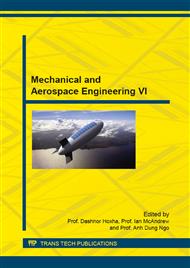p.351
p.357
p.362
p.367
p.372
p.377
p.384
p.390
p.395
Si Particle Size-Controlled Al-17 Mass% Si Alloy and Tool Wear in Cutting Al-17 Mass% Si Alloy by Polycrystalline Diamond Compact Cutting Tool
Abstract:
As high silicon aluminum alloys have both a high strength-to-weight ratio and good wear-resistance, they are used for many automobile and motorbike parts. High silicon aluminum alloys are generally machined to improve dimensional accuracy. In cutting high silicon aluminum alloys such as Al-17mass%Si alloy, the primary Si particles have a negative influence on tool wear. Therefore, polycrystalline diamond compact cutting tools are widely used. In this study, in order to improve the tool wear resistance of polycrystalline diamond compact cutting tools, the Si particle size of Al-17 mass% Si alloy was changed by adjusting the water-cooling speed. Two different kinds of Si particle size, which were changed by adjusting the water-cooling speed, were used. The Al-17mass%Si alloy was turned with the polycrystalline diamond compact cutting tool and the tool wear was experimentally investigated. The main results were as follows: (1) The formed Si particle size was from 30 to 70 μm or from 40 to 170 μm. (2) The mechanical properties of the Al-17 mass% Si alloy did not depend on the Si particle size. (3) The Si particle size included in the Al-17 mass% Si alloy had a major influence of the tool wear, and it was possible to reduce the tool wear by increasing the Si particle size including that in the Al-17 mass% Si alloy.
Info:
Periodical:
Pages:
372-376
Citation:
Online since:
October 2015
Authors:
Price:
Сopyright:
© 2015 Trans Tech Publications Ltd. All Rights Reserved
Share:
Citation:


